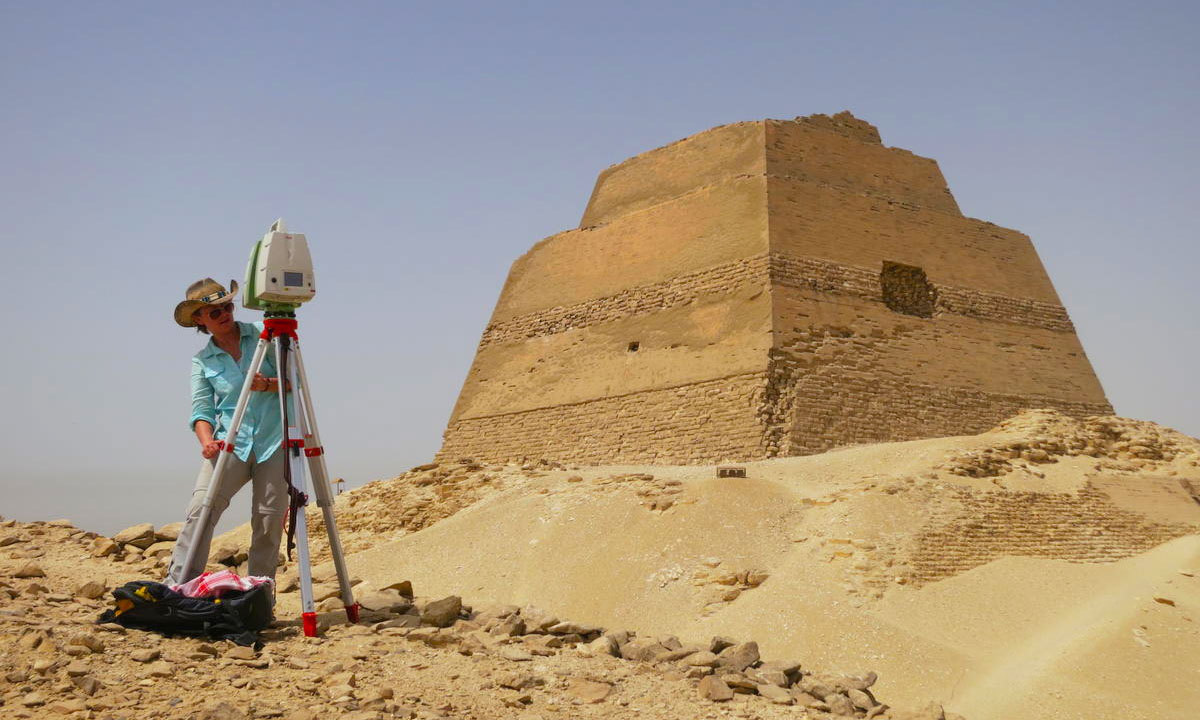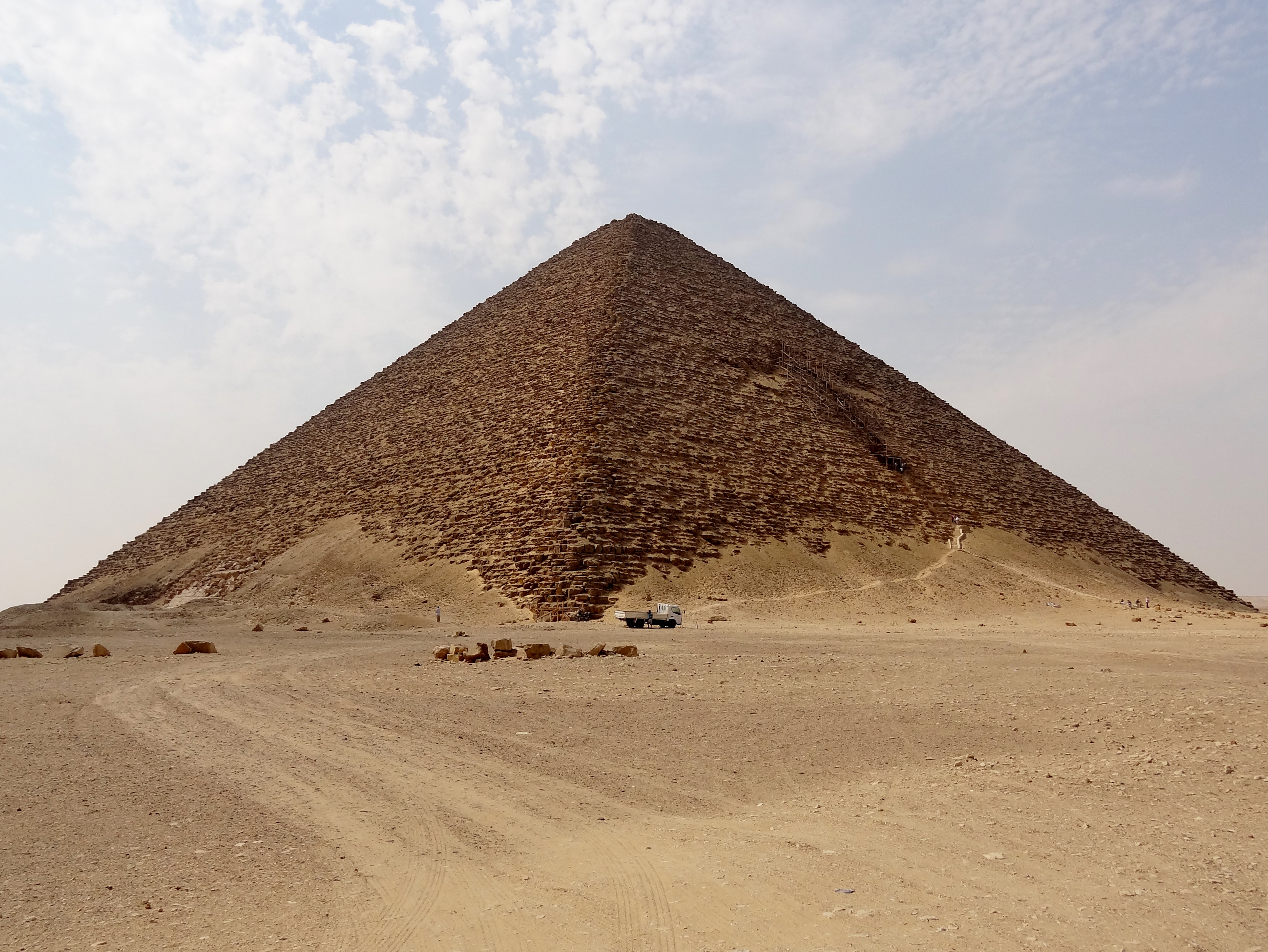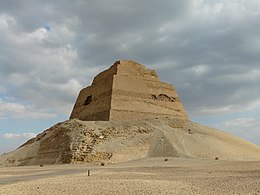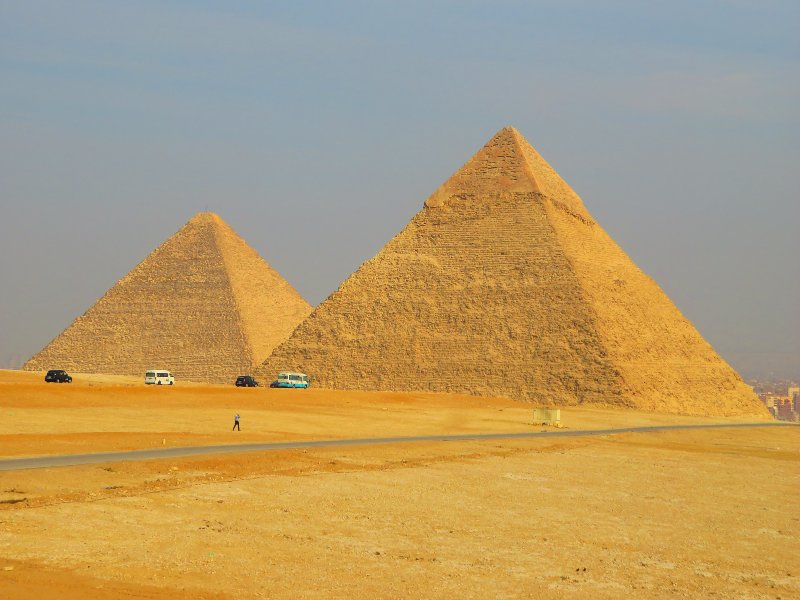Meidum Pyramid: Travel Guide & History

Introduction to the Meidum Pyramid
Overview of the Meidum Pyramid
If you are a history enthusiast or a traveller exploring Egypt, the Meidum Pyramid is a must-see destination. Located around 62 miles south of Cairo, it is one of the most intriguing pyramids in Egypt. Also known as the Pyramid of Sneferu, it showcases the architectural brilliance of the ancient Egyptians.
The Meidum Pyramid was initially designed as a step pyramid during the 27th century BCE. However, it underwent numerous modifications and transformations over time, resulting in its current form. Standing at around 92 meters (302 feet), it is considered one of the tallest ancient pyramids in Egypt.
History and significance of the Meidum Pyramid
The Meidum Pyramid holds immense historical and archaeological significance. It was built during the reign of Pharaoh Sneferu, the founder of the Fourth Dynasty of Egypt. Sneferu was known for his immense contribution to pyramid construction, and the Meidum Pyramid was one of his ambitious projects.
Initially, the pyramid was constructed as a step pyramid. However, it was decided to convert it into a true pyramid during its construction. This conversion process involved filling in the steps and smoothing the exterior, making it Egypt's first true pyramid. The innovative architectural techniques used in this process were a significant milestone in pyramid construction.
While the Meidum Pyramid stands as a testament to ancient engineering skills, it also serves as a historical record of Egypt's ancient past. Exploring this pyramid provides a glimpse into the architectural evolution of pyramids and the beliefs and rituals associated with the afterlife.
Visiting the Meidum Pyramid allows travellers to immerse themselves in the rich history of Egypt and marvel at the achievements of ancient civilizations. With its unique design and historical significance, the Meidum Pyramid offers a captivating experience that should not be missed.

How to Visit the Meidum Pyramid
If you plan a trip to Egypt, visiting the Meidum Pyramid should be on your itinerary. This ancient structure, located about 62 miles south of Cairo, boasts a fascinating history that dates back to the Old Kingdom period. Here, we will explore the location and accessibility of the Meidum Pyramid, as well as the best time to visit and entry requirements.
Location and Accessibility of the Meidum Pyramid
The Meidum Pyramid is situated in the Beni Suef Governorate of Egypt. You can take a taxi or hire a private vehicle from Cairo to reach this historic site. The journey takes approximately 2-3 hours, depending on traffic conditions. The pyramid is easily accessible from the main road, and ample parking is available for visitors.
Once you arrive at the site, you must walk a short distance to reach the pyramid. It is advisable to wear comfortable shoes as the ground around the pyramid can be uneven.
Best Time to Visit and Entry Requirements
The best time to visit the Meidum Pyramid is during the cooler months of October to April, when the weather is more pleasant for outdoor exploration. The site can get crowded during peak tourist season, so arriving early in the morning is advisable to beat the crowds and enjoy a more peaceful experience.
Regarding entry requirements, you must purchase a ticket to enter the Meidum Pyramid. The ticket price includes access to the pyramid and the surrounding archaeological area. It is important to note that the pyramid's interior is not open to visitors for safety reasons. However, you can explore the exterior and take in the grandeur of this ancient structure.
When visiting the Meidum Pyramid, it is recommended to hire a local guide who can provide valuable insights into the history and significance of the site. They can also help navigate the area and ensure you make the most of your visit.
Overall, a trip to the Meidum Pyramid offers a unique opportunity to witness the architectural wonders of ancient Egypt. By considering the location, accessibility, best time to visit, and entry requirements, you can plan a memorable and enriching experience at this historic site.
The Construction of the Meidum Pyramid
The Meidum Pyramid, also known as the Pyramid of Sneferu, is an ancient Egyptian pyramid near the modern-day el-Meidum village. This pyramid is considered one of Egypt's earliest and most important examples of pyramid construction. In this article, we will explore the architectural design and structure of the Meidum Pyramid, as well as its evolution over time.
Architectural Design and Structure
The Meidum Pyramid was originally built as a stepped pyramid, similar to the earlier pyramid of Djoser at Saqqara. However, it underwent significant modifications during its construction. The pyramid was initially built with six steps, but later, additional layers were added to convert it into a true pyramid.
The pyramid measures around 93 meters in height, making it one of the largest pyramids in Egypt. It was constructed using limestone blocks carefully cut and fitted together. The pyramid's interior contains a series of chambers and corridors, including a burial chamber believed to have been intended for the pharaoh Sneferu, who commissioned its construction.
Evolution of the Meidum Pyramid
The Meidum Pyramid went through several phases of construction and modification, reflecting the evolving pyramid-building techniques of ancient Egypt. The original stepped pyramid design was expanded with additional layers, creating a smooth-sided, true pyramid. However, the structure faced structural issues and collapsed, damaging its state.
The Meidum Pyramid's collapse highlights the challenges ancient Egyptian architects faced in perfecting the art of pyramid construction. Despite this setback, the Meidum Pyramid played a crucial role in developing pyramid-building techniques, serving as a precursor to the more renowned pyramids of Giza.
Today, the Meidum Pyramid stands as a testament to the architectural ingenuity of ancient Egyptians. Visitors to the site can explore the various chambers and corridors within the pyramid, gaining insight into the remarkable construction methods employed by ancient builders.

The History and Mystery of the Meidum Pyramid
The Meidum Pyramid is an ancient structure with a rich history and a touch of mystery. Let's delve into the historical background, Pharaohs associated with the pyramid, and the controversy surrounding it.
Historical background and Pharaohs associated with the pyramid
The Meidum Pyramid, also known as the Pyramid of Sneferu, is located in Egypt and is believed to have been built during the Old Kingdom period, around 2600 BC. It was constructed as a burial site for Pharaoh Sneferu, the first ruler of the 4th Dynasty of Egypt. Sneferu is known for his ambitious building projects, and the Meidum Pyramid was one of his grandest endeavours.
However, it is important to note that the pyramid went through several stages of construction. Initially, it was built as a step pyramid but later underwent modifications to transform it into a true pyramid structure. These modifications were carried out by Sneferu's son, Pharaoh Khufu, who would go on to construct the Great Pyramid of Giza.
Controversy and unanswered questions surrounding the Meidum Pyramid
The Meidum Pyramid is not without its controversies and unanswered questions. One of the most perplexing aspects of the pyramid is its collapsed state. The pyramid's outer casing has collapsed, leaving behind a smaller inner core. The exact reasons for the collapse are still debated among archaeologists and Egyptologists.
Another mystery surrounding the Meidum Pyramid is the purpose of the enigmatic decorative reliefs found on the walls of the pyramid complex. These reliefs depict scenes of hunting, fishing, and other daily life activities. The meaning behind these reliefs and their significance in the overall purpose of the pyramid remains unresolved.
Despite these unanswered questions, the Meidum Pyramid continues to attract visitors from around the world. Its unique history, connection to Pharaoh Sneferu, and the allure of its unresolved mysteries make it a fascinating destination for those interested in ancient Egyptian history.

Exploring Inside the Meidum Pyramid
One historical site that should not be missed when visiting Egypt is the Meidum Pyramid. This pyramid, located about 100 kilometres south of Cairo, is an ancient wonder that offers a fascinating glimpse into the country's rich history. As you step into the interior chambers and passages, you will be transported back in time to the reign of Pharaoh Sneferu, who commissioned the construction of this pyramid around 2600 BC. Let's explore what awaits inside and learn about the artefacts and discoveries within the Meidum Pyramid.
Interior Chambers and Passages
Entering the Meidum Pyramid, you will be struck by the grandeur of the architecture. The pyramid was originally built as a step pyramid before being converted into a true one. You will encounter a series of chambers and corridors as you move through the passages. These were once believed to hold the burial chambers of the pharaoh and his family. Although most of the interior has been damaged over time, you can still witness the remnants of intricate carvings and hieroglyphics that adorned the walls.
Artifacts and Discoveries within the Meidum Pyramid
While exploring the Meidum Pyramid, you can see some of the artefacts and discoveries unearthed during excavations. Archaeologists have found fragments of statues, pottery, and other objects that offer insights into the daily lives of ancient Egyptians. Notably, a skull fragment possibly belonging to Pharaoh Sneferu himself was discovered, adding to the intrigue surrounding this pyramid.
As you walk through the corridors and examine the artefacts, you will gain a deeper appreciation for the craftsmanship and ingenuity of the ancient Egyptians. The Meidum Pyramid is a testament to their architectural prowess and significance in honouring their pharaohs.
Whether you are a history enthusiast or simply curious about ancient civilizations, exploring the interior of the Meidum Pyramid is a journey that will leave you in awe. So, strap on your explorer's hat and immerse yourself in the wonders of this magnificent pyramid, unravelling the mysteries of ancient Egypt along the way.
Please note: Due to ongoing restoration efforts and the fragility of the structure, access to certain areas within the Meidum Pyramid may be restricted at times.
Nearby Attractions and Activities
When visiting the Meidum Pyramid, there are several other sites of interest in the area that you should consider exploring. These attractions will give you a deeper insight into ancient Egypt's rich history and culture. Additionally, recreational activities and amenities are available for visitors to enhance their experience.
Other Sites of Interest in the Medium Area
One notable site near the Meidum Pyramid is the Meidum Necropolis. This ancient burial ground contains numerous tombs and mastabas, offering a glimpse into the funerary practices of the time. You can explore the structures and observe the intricate hieroglyphs and carvings adorn the walls.
Another fascinating attraction is the Pyramid of Djoser in Saqqara, around 20 kilometres from Meidum. This stunning step pyramid is one of the earliest examples of pyramid architecture in Egypt and is a UNESCO World Heritage Site. It is a remarkable testament to the architectural achievements of the pharaohs.
Recreational Activities and Amenities for Visitors
While exploring the Meidum area, you can engage in various recreational activities and use the available amenities. If you enjoy hiking and nature, scenic trails surround the pyramid, where you can take leisurely walks and enjoy the beautiful landscapes.
Additionally, there are picnic areas and designated spots for visitors to relax and have a picnic amidst the historical surroundings. You can savour a meal while soaking in the atmosphere and reflecting on the marvels of ancient Egypt.
To make the most of your visit, hiring a knowledgeable local guide who can provide insights into the history and significance of the Meidum Pyramid and other attractions in the area is advisable. They will ensure you have a fulfilling and informative experience while exploring the Meidum region.
Whether you are fascinated by ancient history, architectural wonders, or outdoor activities, the Meidum area offers something for everyone. Immerse yourself in the rich heritage of Egypt and create lasting memories as you explore the breathtaking sites around the Meidum Pyramid.

Tips for Travelers and Final Thoughts
-
Getting There: To visit the Meidum Pyramid, hire a private tour guide or join a group tour that includes transportation. It takes about one and a half hours from Cairo to reach the site.
-
Entrance Fees and Opening Hours: The Meidum Pyramid is closed to the public for restoration purposes. However, it is possible to admire the pyramid from the outside. It is recommended to check the latest updates on its accessibility before planning a visit.
-
Travel Preparations: Egypt has a rich cultural heritage, and it is always advisable to research and respect local customs and traditions. Dress modestly, carry essentials like sunblock and a hat, and stay hydrated while exploring the area.
-
Exploring Nearby Attractions: Meidum is located within close proximity to other significant ancient sites, such as the Bent Pyramid and the Red Pyramid. Consider including these attractions in your itinerary to make the most of your visit to the area.
-
Final Thoughts: The Meidum Pyramid provides a fascinating insight into the evolution of pyramid construction in ancient Egypt. Its unique architecture and historical significance make it a must-visit destination for history enthusiasts and travellers interested in ancient civilizations.
While visiting the Meidum Pyramid, take the time to appreciate the impressive engineering skills of the ancient Egyptians and the mysteries surrounding this pyramid's incomplete state. Immerse yourself in the rich history of Egypt and make memories that will last a lifetime.
